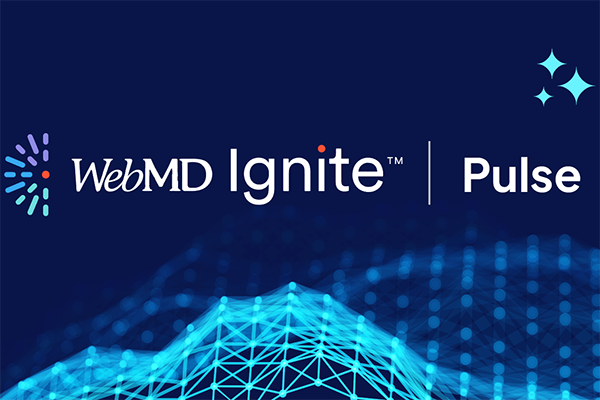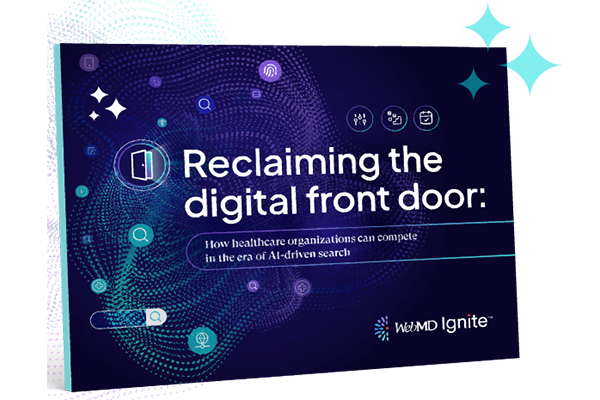Editor's Note: This blog was published prior to the transition to WebMD Ignite.
Seven years into the Centers for Medicare and Medicaid’s Hospital Value-Based Purchasing Program (VBP)1, most hospitals are coming to terms with the demise of lucrative fee-for-service reimbursement, which rewarded them for care quantity vs. quality. VBP incentivizes providers to close gaps in care and engage patients in their own care while removing incentives to overtreat. Health systems receive positive payment adjustments for improving patient health status.
While population health isn’t synonymous with value-based care (VBC), providers have needed to build out population health strategies supported by technology to earn incentives. By extending your EHR with a population health management platform, you’re able to maximize positive payment adjustments by stratifying risk and closing gaps in care. Adding a CRM can dramatically increase patients’ engagement in their own health and compliance with treatment plans.
But if your CRM lacks rich healthcare and consumer data and analytics, you’re missing out on lucrative patient acquisition opportunities that are equally essential to financial viability. With the right healthcare CRM, you turbocharge both your population health and service line growth strategies.
Limits of population health
Population health is good for everyone, especially patients. But it is fundamentally a penalty avoidance strategy. It does nothing to help you acquire new patients or reduce referral leakage. It’s easy to calculate VBP positive payment adjustments, but what about the patient lifetime value of consumers you’re not capturing and the markets you’re ceding to competitors? Are you even aware of the best growth opportunities that you’re not pursuing?
If you’re not using the right models to identify and target those who are likely to need a new service in the next 12 months, you’re leaving money on the table. Meanwhile, deep-pocketed big-box retailers and pharmacy chains — masters at building loyal consumer relationships — are upending healthcare delivery by meeting consumer expectations around access to care, cost, and convenience.
Population health initiatives aggregate patient data and stratify patients into high-risk, low-risk, and rising-risk groups so their conditions can be managed by closing gaps in care. That’s incredibly powerful from a clinical perspective, but it is self-limiting. Because EHR data is encounter-based, population health methodologies assign risk largely based on discrete disease states. Population health systems identify certain conditions but don't use sophisticated models designed for tracking measurable outcomes to uncover wider risks based on a holistic view of the individual. Many healthcare executives are likely unaware of this significant weakness, which may impact VBR.
Population health initiatives typically place a heavy burden on care coordinators to keep patients engaged. A CRM-enabled population health strategy incorporates scalable, data-driven tactics that are still highly personalized but free clinical staff to focus on the most challenging patients. Outreach efforts use patients’ preferred channels, including friendly call center agents, with content designed to resonate based on their profiles.
What to expect from your CRM
Like any non-commodity, all CRMs are not created equal, and differences can be costly. It’s important to know what’s included with your CRM and what isn’t. First, implementation: Is it configured to match what you saw in the demo, and if not, will you need a systems integrator (SI)? How much customization is required, and what’s the estimated time to value? What about new releases? Is the vendor innovating with your needs in mind if their platform is industry agnostic, or will each release break your customizations and require more SI resources?
Second, there are many different approaches to health data management and analytics. Some vendors recommend you focus on population health engagement first, using just your clinical data. That’s fine, and EHR data may be sufficient for this purpose, although the more you know about your population the better. But if you want to leverage CRM for growth — where it’s really designed to deliver value — eventually you will have to buy third-party data and build your own enterprise data warehouse.
In addition to cost, there are a number of issues with this “you’re on your own” strategy. Who is going to maintain data hygiene, such as the accuracy of person matching? Once you have curated data, how will you turn it into actionable insights? Who is going to build your models and test their validity, and do they have decades of healthcare data science experience? Have your models been proven over time and across health systems to drive results? This is where WebMD Ignite can help with innovative solutions for health consumer and patient relationship building.
Leverage the core value of CRM
Healthcare CRM’s value derives from the richness and quality of its data repository, combined with analytics that glean actionable insights to achieve business goals. For service line growth, it lies in the power to predict who in your market is at risk for various health conditions in the next 12 months, then target and intelligently engage them based on a keen understanding of their preferences, lifestyle, and needs. For population health, it provides the holistic understanding, beyond clinical profiles and risk scores, of what motivates each patient to adhere to treatment plans.
Those are just two use cases. When deploying healthcare CRM, think broadly. It’s a powerhouse that identifies your best market opportunities and targets audiences whose needs align with those opportunities, using the same data-driven strategies long used by other industries to acquire and retain new customers. That will be your lifeline as retail entrants encroach further into healthcare delivery. Don’t sub-optimize your CRM investment with limited data.
Sources
1.https://www.cms.gov/newsroom/fact-sheets/cms-hospital-value-based-purch…





